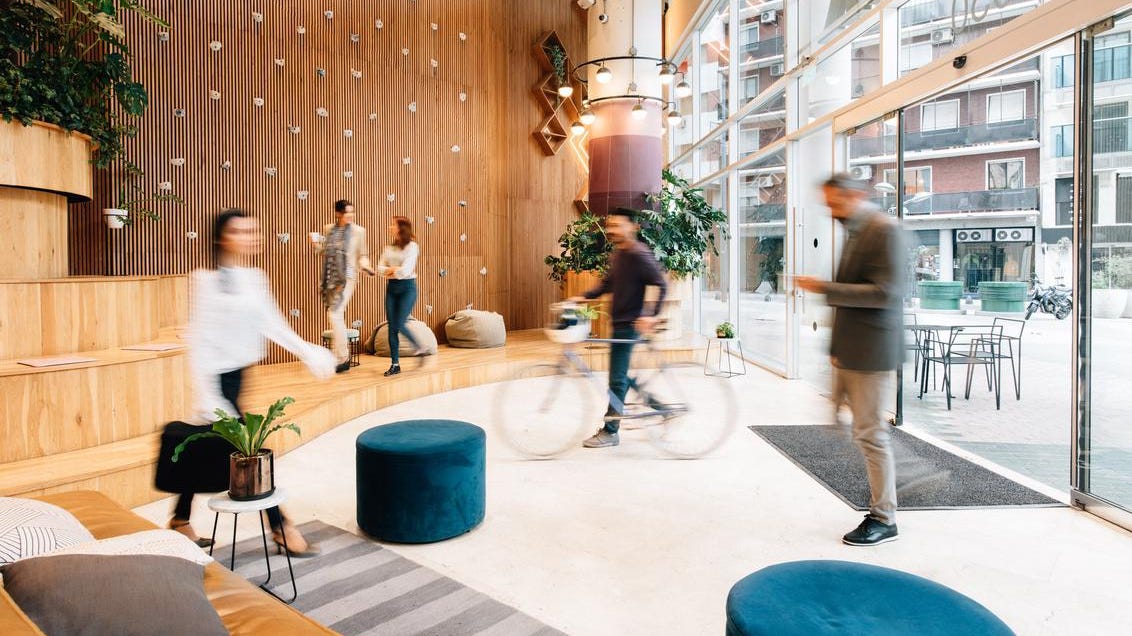Employees commuting
It’s been three years since the peak of the COVID-19 global health crisis. Although almost every organization is back to “business as usual,” many companies look way different today than in early 2020.
One of the most significant changes has been the rise of remote working. While telecommuting has been a boon to some companies, it’s not the right solution for every business. A recent survey estimates that 90% of leaders want workers to return to the office in 2023. This is a big ask, especially since almost three-quarters of employees need incentives to return to traditional office life. “Because we say so” isn’t a compelling reason anymore—especially in a job market that still favors candidates over employers.
You may need to get creative if you want to bring your employees back to the office. You likely demonstrated resilience and innovation by enabling your team members to work from anywhere. Now, you’ll need to rely on that same innovation mindset to prompt everyone to show up in person again.
If you’ve found yourself wondering how to get employees eager to work in the office again, consider these recommendations:
1. Redesign your culture.
Rather than turning back the clock and pretending nothing happened, leverage this moment to reinvent your culture. Many business cultures could use a reboot anyway. Now could be the perfect time to try something different to drive connectivity and camaraderie.
Jasmine Pierik, head of art program, events, and member experience at The Yard, says her company is bringing everyone back to a warmer, artsier workplace.
“Each of our 11 locations has a curator in residence who works with me to organize one exhibition per quarter in each location,” says Pierik. The program brings accessible gallery space to the local creative community and surrounds team members with stunning, thought-provoking art that changes on a regular basis. This catalyzes conversation and connection. “It adds a layer to what we are doing here, diversifying the ecosystem and making The Yard much more than a place to work,” says Pierik.
Your employees will appreciate creative solutions to make your workplace more attractive and unique. Be proactive and include your employees in these decisions. Collect feedback and come up with fun ways to replicate what your employees love so much about being at home. The more input you allow your employees to have, the greater the likelihood they’ll want to return.
2. Embrace water cooler conversation.
Chris Capossela, chief marketing officer and executive vice president of consumer business at Microsoft, describes the underlying reasons why most back-to-work attempts fail. “No one wants to go into the office just to spend the day on video calls and answering emails and pings,” writes Capossela.
For generations, people have enjoyed work for a nonwork reason: It allowed them to connect with people other than their family members, friends, and neighbors. For many employees, their colleagues were their friends, and being around others who understood their industry gave them a sense of belonging and fulfillment.
Although there are still plenty of opportunities to connect online, planning in-person events and creating a collaborative office space could help reignite your employees’ desire to be together again. You don’t want to risk losing the sense of connection that in-office work can bring.
3. Redefine flexibility.
Adding more benefits to your employees’ packages may be necessary to get them to agree to come back full- or part-time. Kathryn Mayer, former benefits editor at Human Resource Executive, suggests being very deliberate with whatever perks you offer and tailoring them to your workers. For instance, if you have a lot of parents with young kids, you might want to consider offering daycare stipends.
Another perk that can be irresistible to employees is flexible scheduling. About 95% of people say they want to arrange their schedules. Remember that flexibility doesn’t necessarily mean working from a remote location. Flexibility can mean coming into the office at 10 a.m. and leaving at 7 p.m. or working four 10-hour days instead of a more traditional schedule.
How can you be sure that your incentives are hitting home? Measure them. Almost anything can be measured, including who’s using paid time off and who’s leaving it on the table. By tracking metrics, you can determine what benefits to keep and what new ones you should offer.
4. Make the office feel like home.
Be honest: Does your workplace feel like home, or is it a practical, sterile environment? To entice workers to give up their comfy sofas and warm home offices, you must make sure your spaces feel cozy and relaxing. Though it’s fine to have buttoned-up spaces, you may want to have quiet, private spots or areas where people can kick back together.
This is about more than just staging your workplace, though. You must balance the many needs of your employees. Don’t assume that putting a sectional in your break room will suddenly make workers ready to return to the office. Ask employees what they want to see, and put your budget toward a new layout and furnishings.
You may even want to take everything a step further and remove all signs of your logo. Monday.com has done this to great effect. Rather than jarring employees with a big sign that declares “you’re in the office,” the company introduced soothing lighting and neutral colors. This fosters a gentle psychological transition from home to the workplace.
You’ll always have some employees who resist coming back to work after so many years of working virtually. However, if you put some thought behind the switch and increase the office’s appeal, you might be surprised at how quickly everyone adjusts. Just be prepared to increase your beverage and snack budget—all those workers can’t find their flow without a little fuel.
The post originally appeared on following source : Source link

